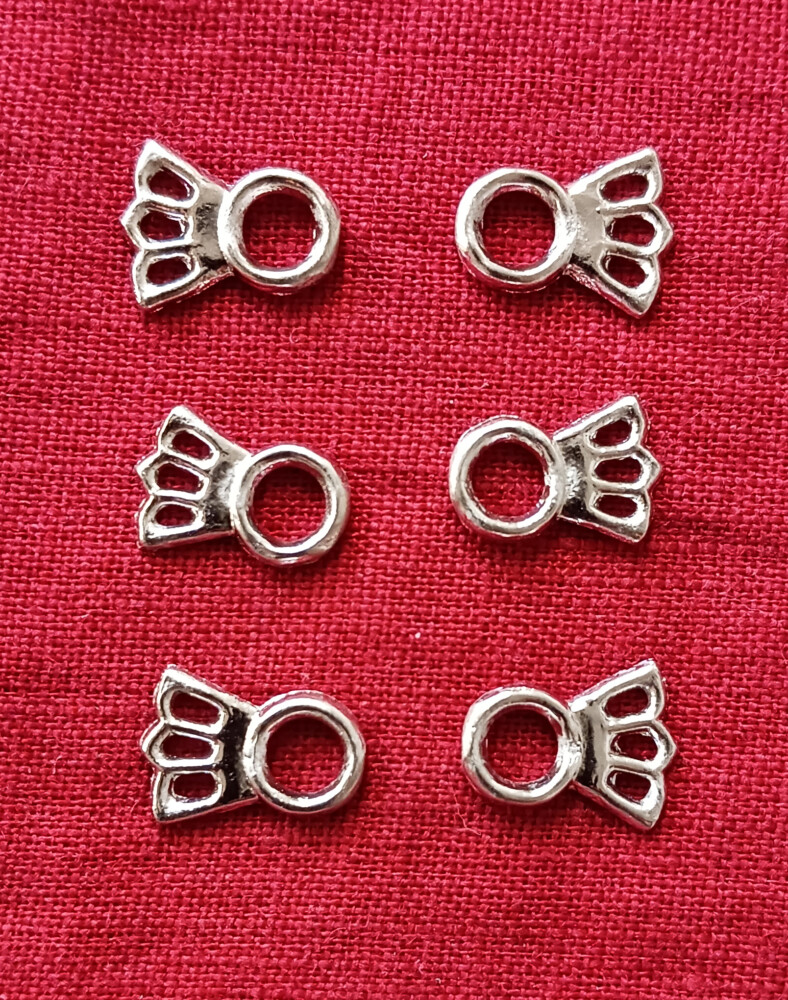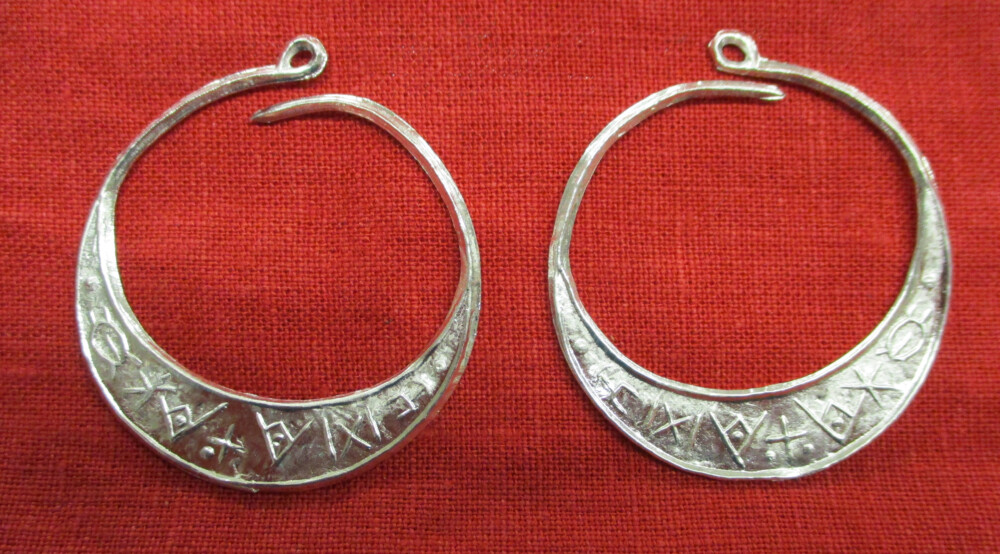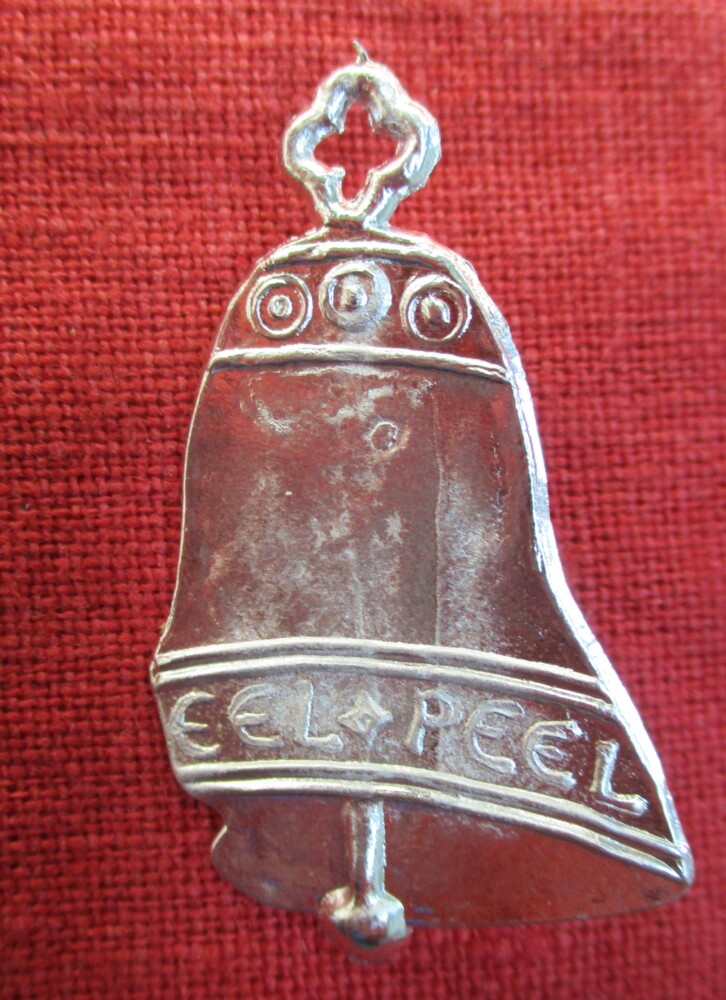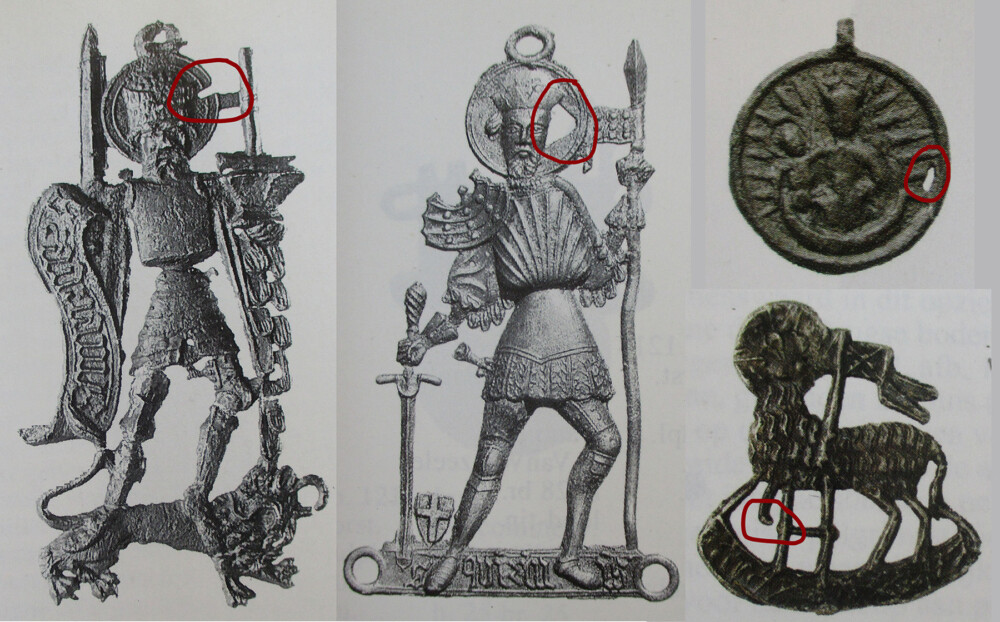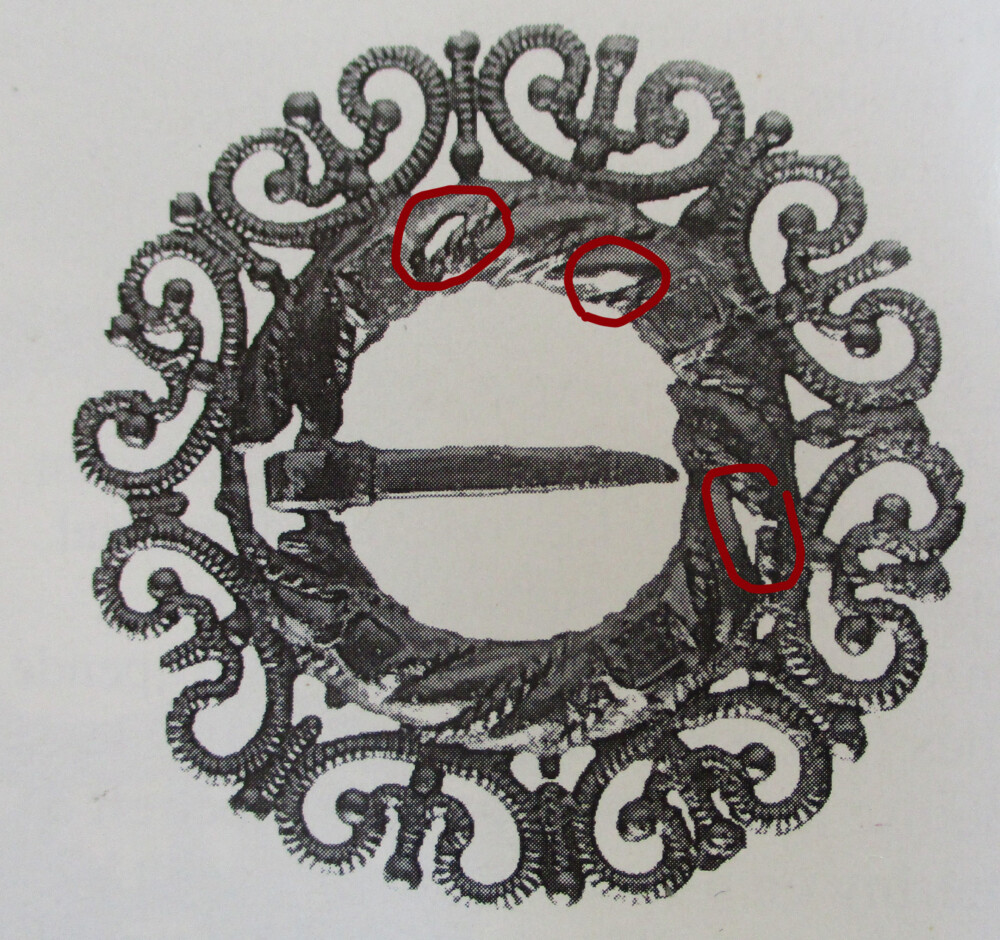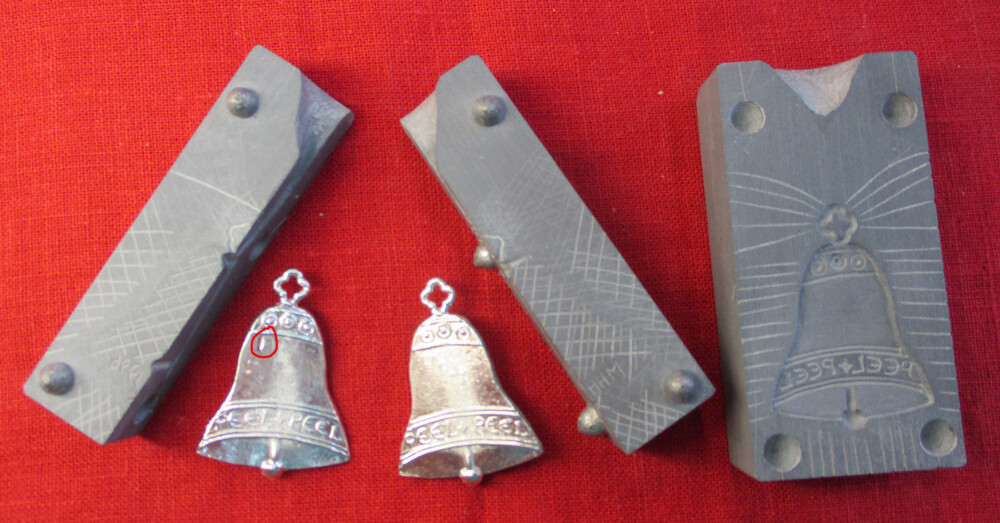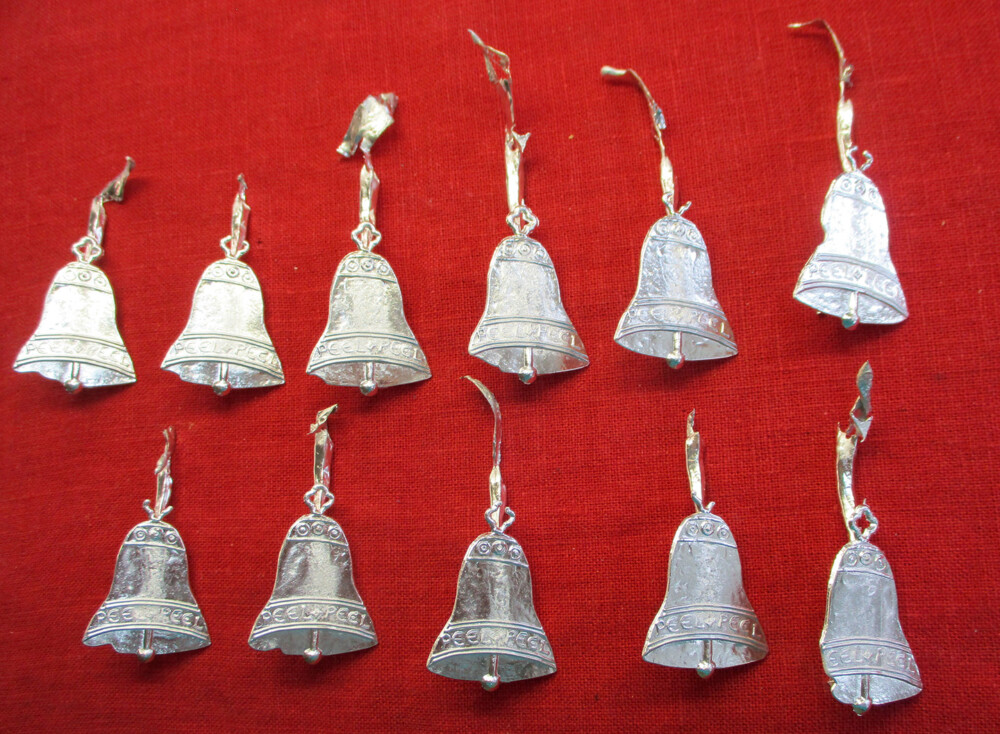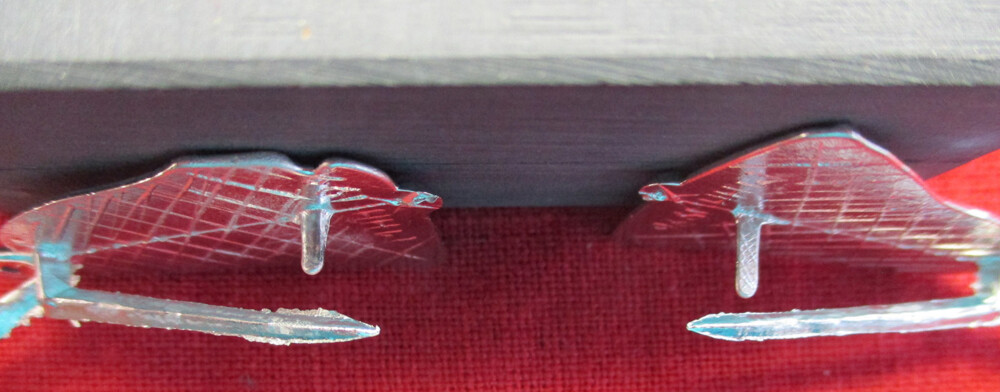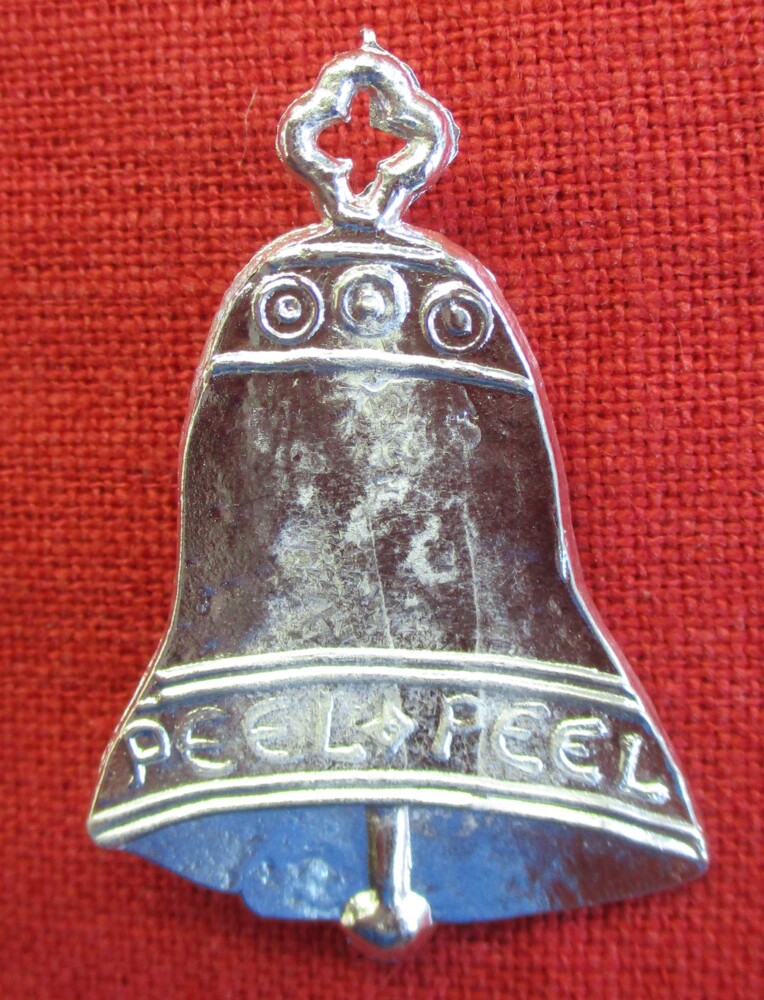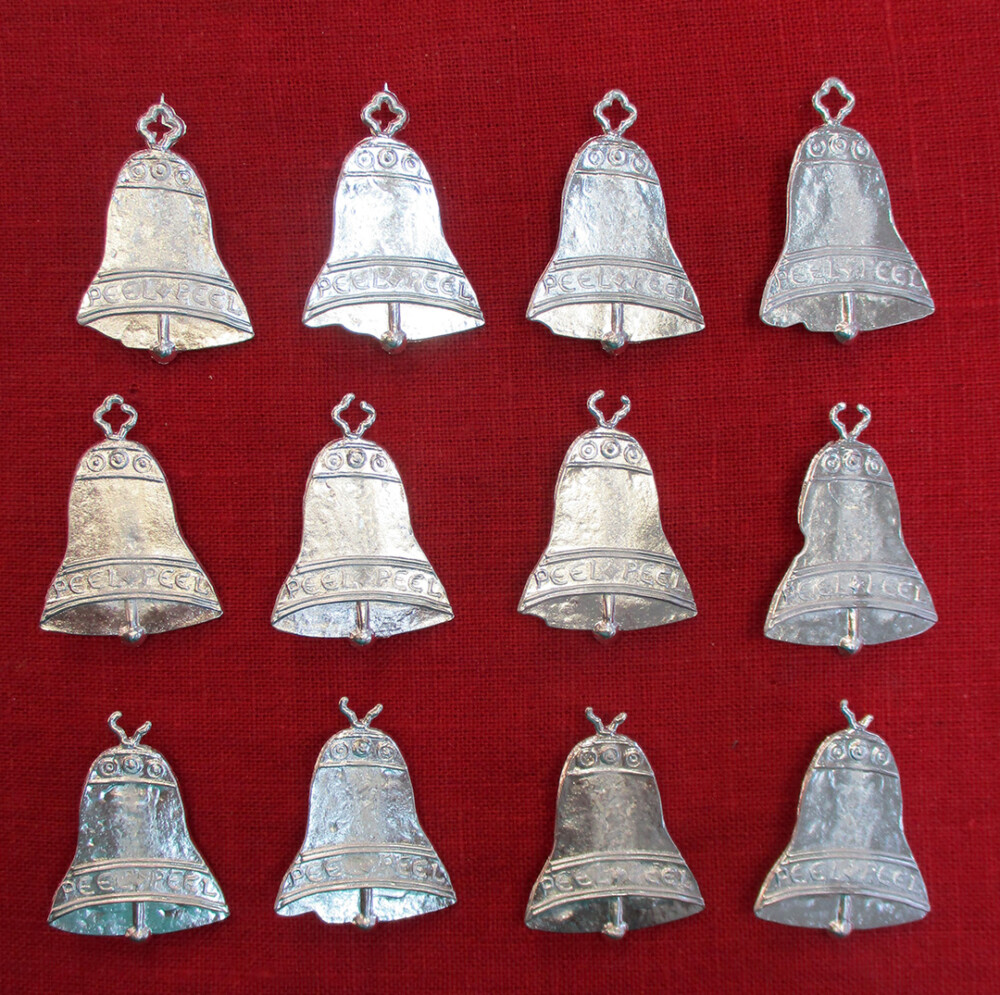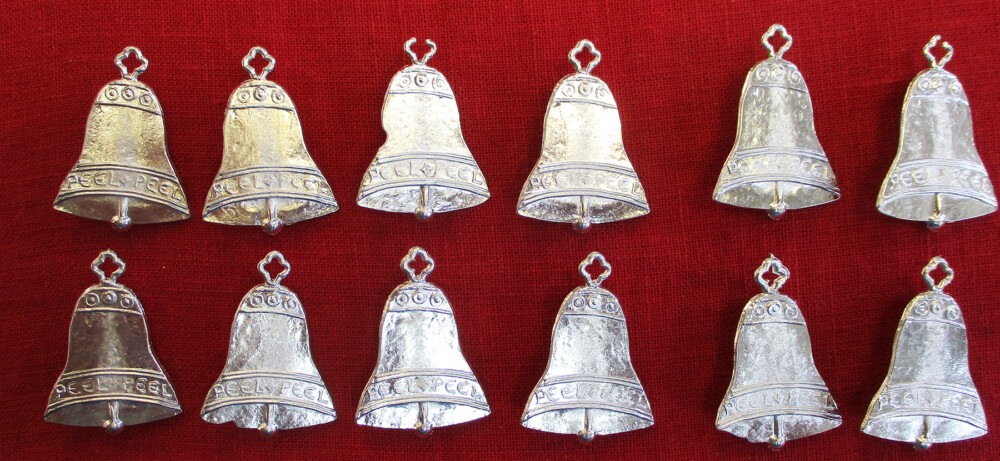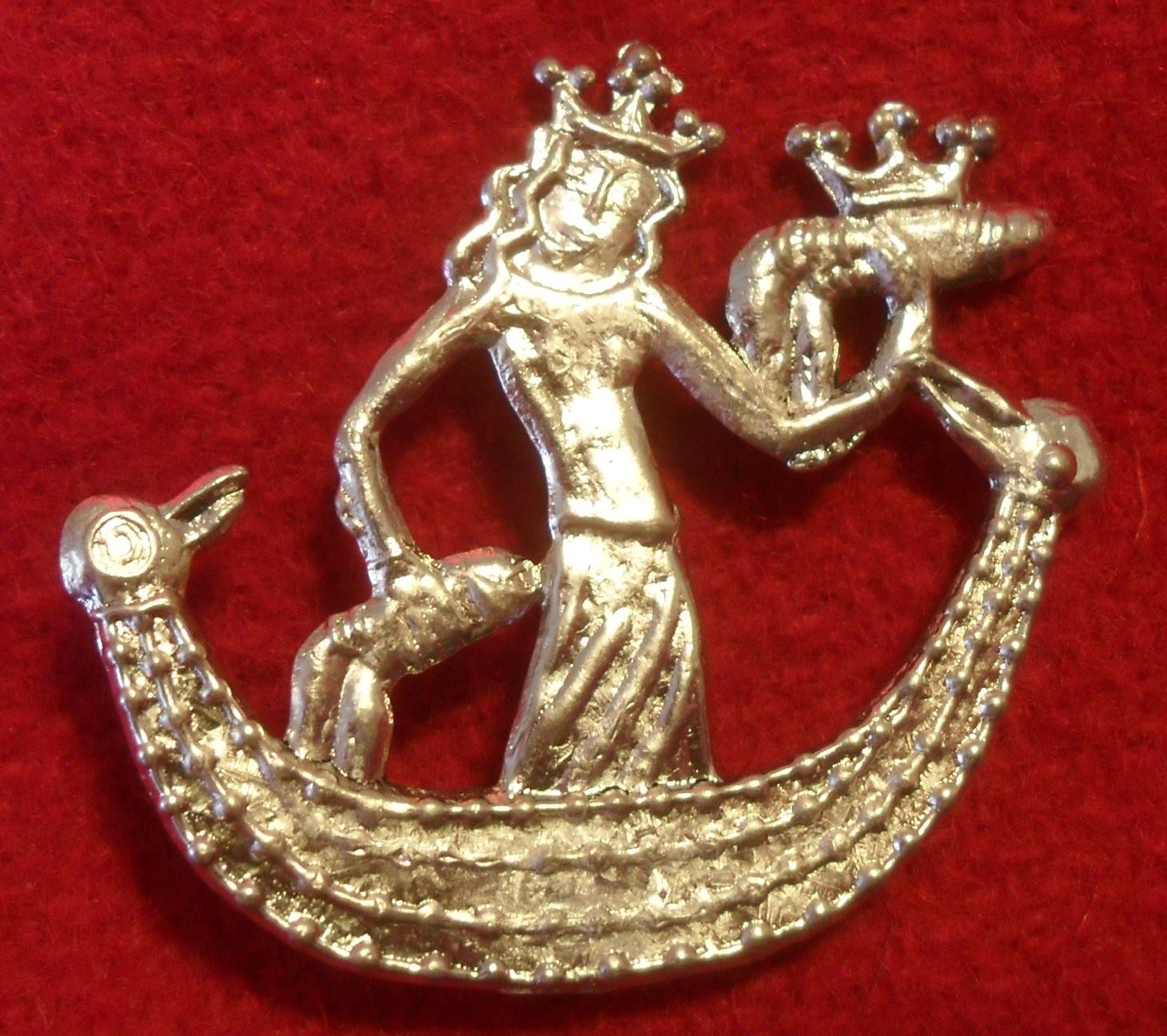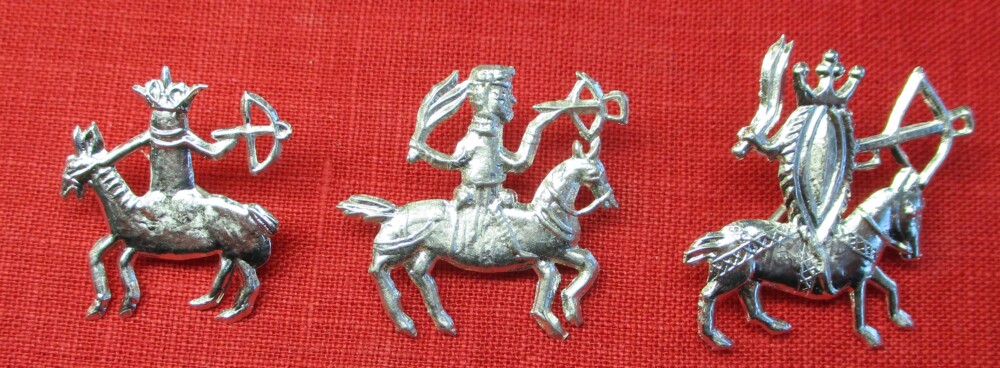
We are accustomed to seeing reworked visual material in our day to day lives – American flags with the fields in various colors or with additional images overlaying the official design; blond “housewives” weeping, shouting, and pointing paired up with irritated cats; folks making improvised costumes to evoke famous paintings. It turns out medieval people were into it also – and some of those jokes ended up as obscene pewter dress accessories.
We are especially delighted by the naughty items that can be mistaken for their clean counterparts unless you are close enough to see the details – and of course, we like to make them. And bear in in mind that in a world without vision correction, many people would have to be very close to distinguish between these pairs.
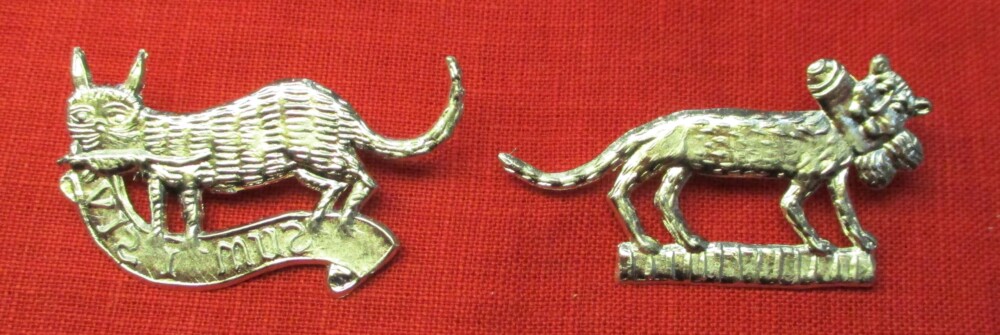
Our most popular pair includes the Good Kitty and the Bad Kitty. The good kitty has caught a mouse. The bad kitty has definitely gotten hold of something it should not have. Of course, this is not quite as strange then as it would be now – a number of medieval and early modern images show independent penises flocking in trees like birds, being offered to prospective partners, flying through the air, or being carried by a cat.
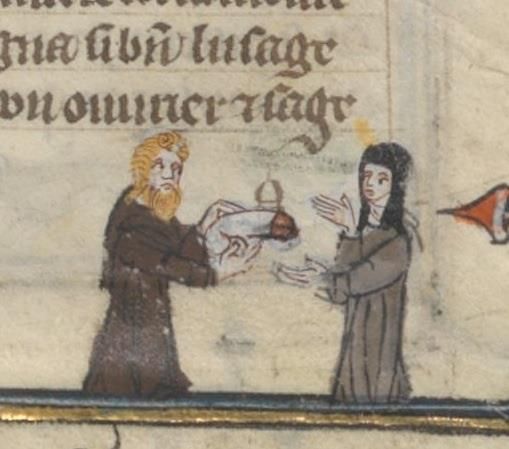
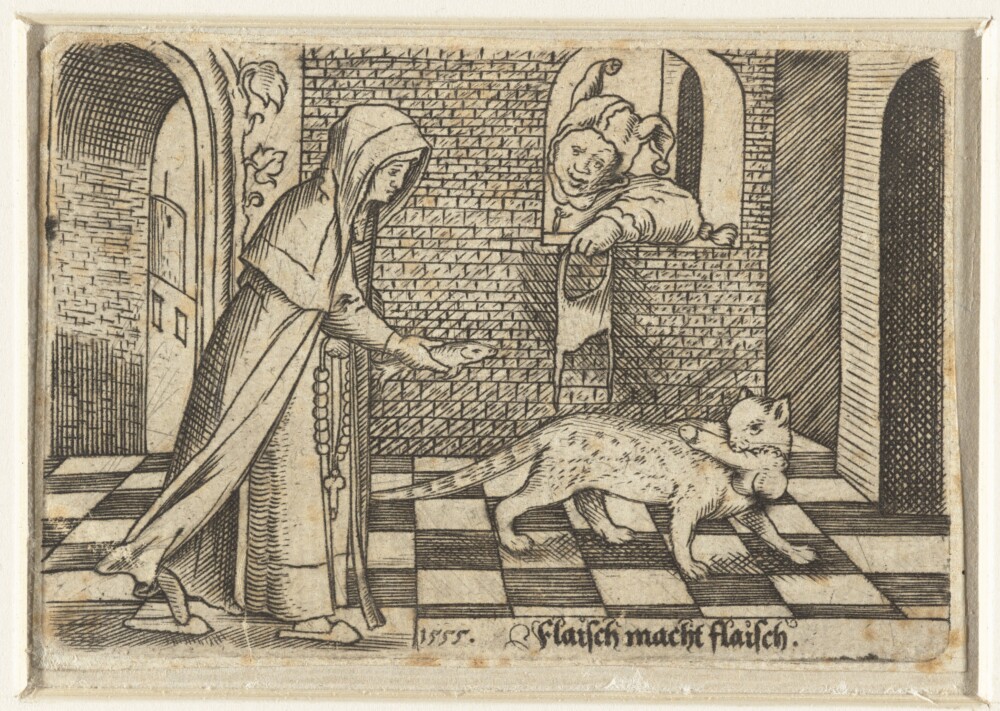
So although it might be shocking to find that your companion’s brooch did not depict the ordinary cat you expected, at least the entire idea of a detached erect penis would not necessarily disturb you.
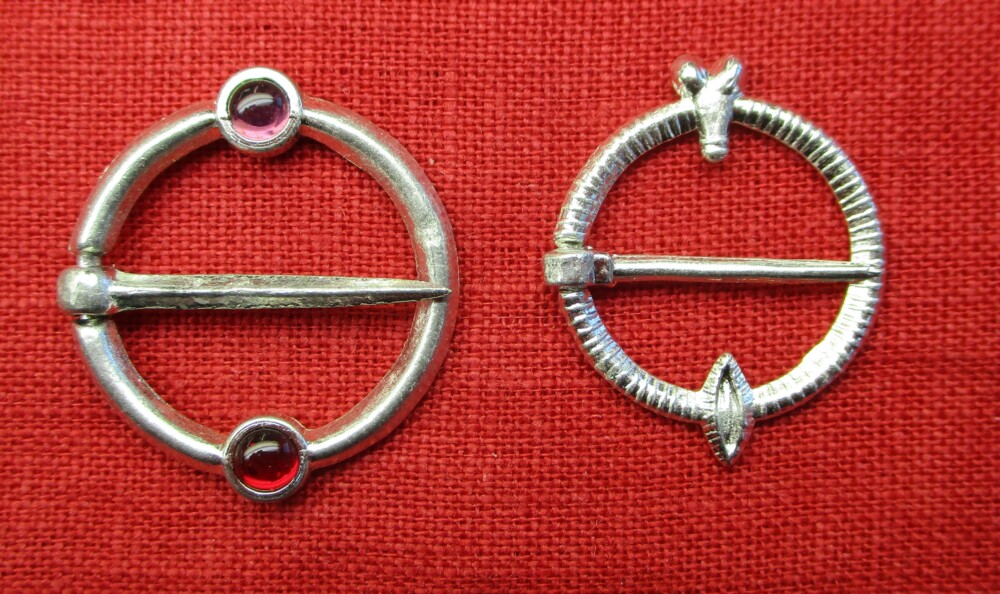
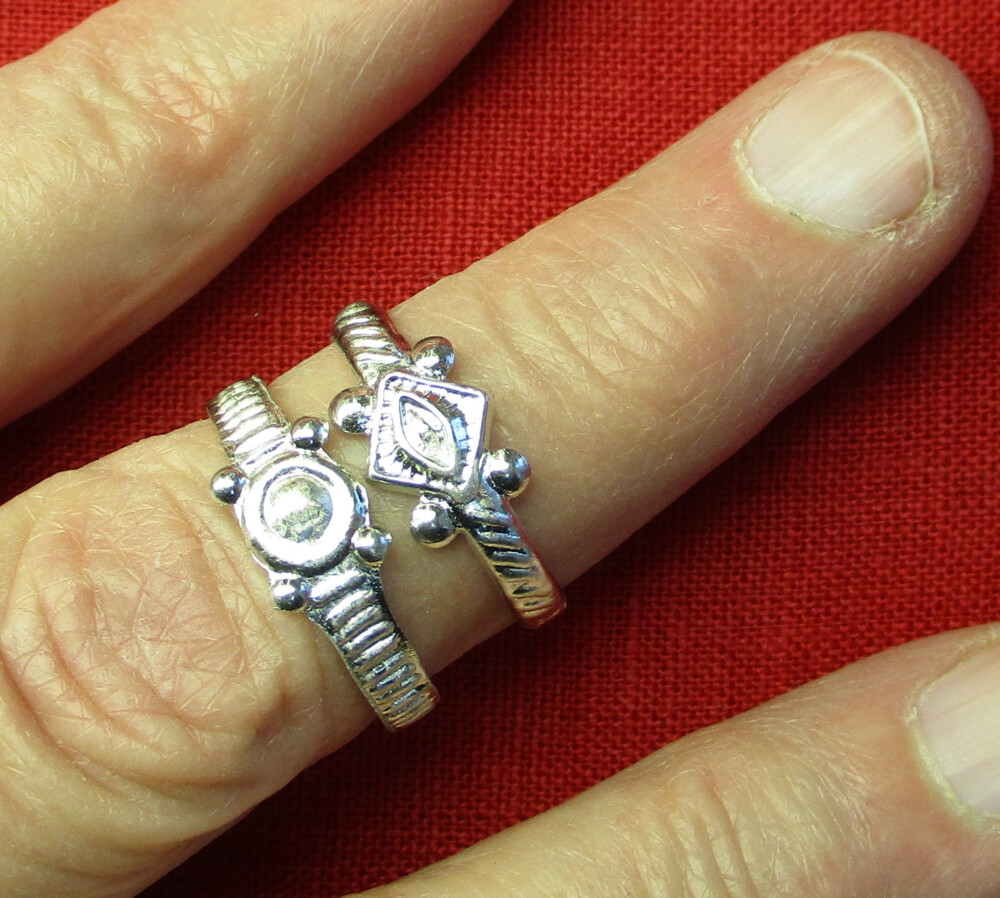
Some types of brooches are so ubiquitous that it would be easy to conceal the joke. Ring brooches are the most popular brooch form of the High Middle Ages, and they come in all sizes from humongous to quite petite. The small Naughty Ring Brooch, with its delicate little penis and vulva, is indistinguishable from dozens of contemporary round ring brooches from more than a yard/meter or so away. Similarly, the Pussy Ring is extremely discreet – designed just like other pewter rings – or rings made in other metals – with a central setting surrounded by four tiny “pearls”.

Purse brooches and pendants are also common, and may well have been thought of as a sort of good luck piece, guaranteeing that your real purse was never empty. We have three purse pendants, two respectable ones and then the Full Purse, which is doubly deceptive: it is utterly inoffensive on one side, but the wearer can flip it over to reveal that it contains three more of those wandering penises.
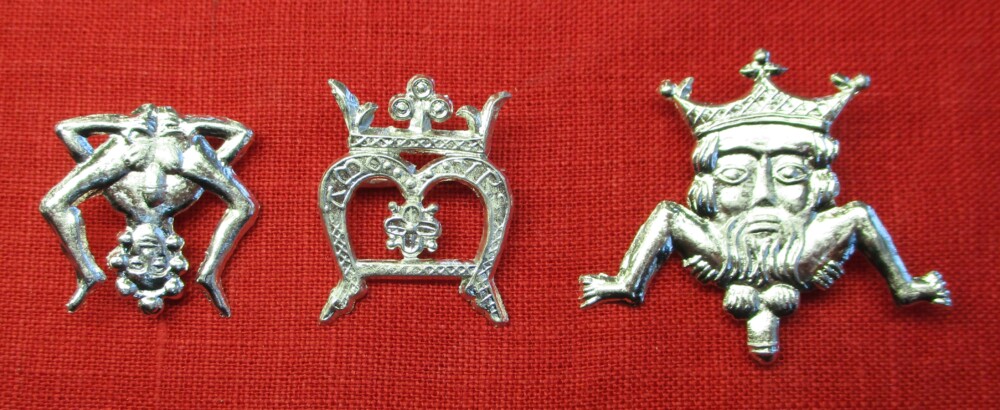
M-shaped brooches are frequently found, in both precious and base metals. The initial probably usually refers to the Virgin Mary, although it may have other meanings, including Minne – courtly or romantic love. The brooch in the middle of the triplet set is a characteristic example of one of these harmless brooches – and it says AMOVRS, so we can be sure it is a love token. The acrobatic Mr. M has a nearly identical overall shape, while the KingDing shares the crown but not the exact outline.
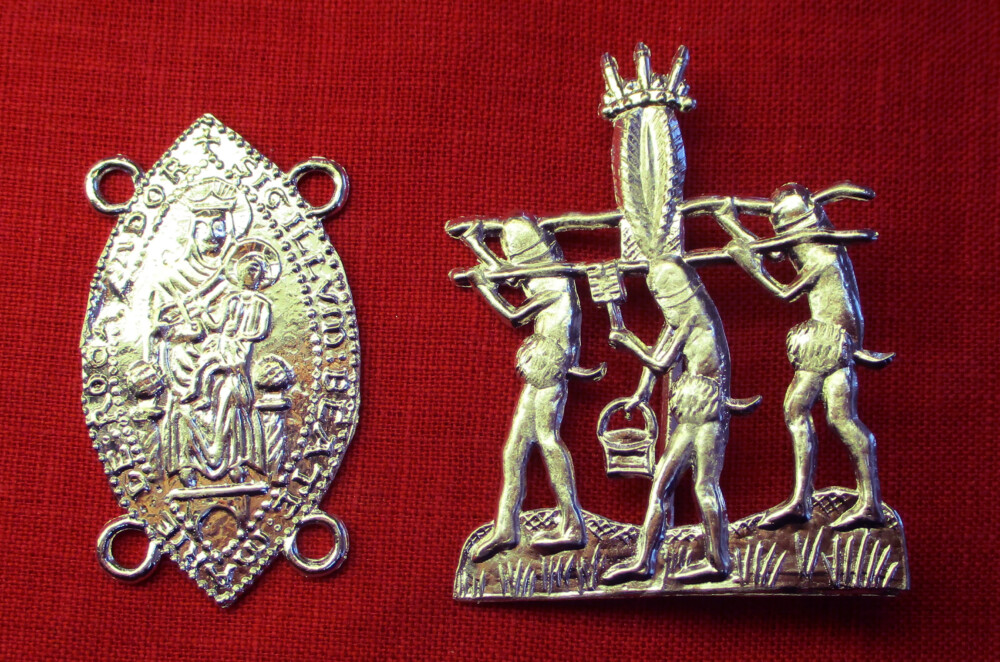
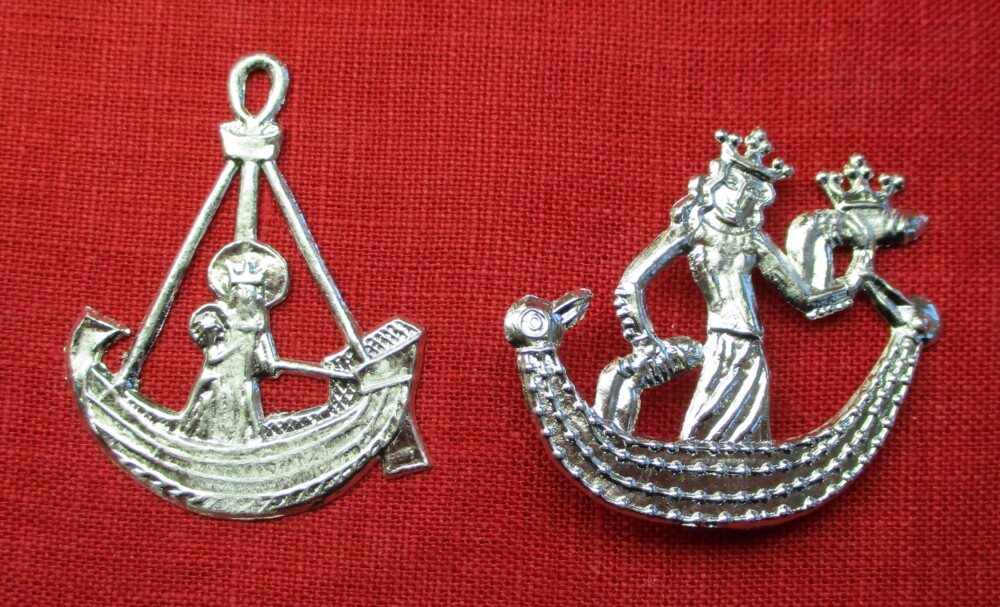
A relatively small number of naughty items present visual puns on religious motifs – although the Regina Terris brooch obviously displays a vulva as a religious icon carried in a procession, complete with a penis priest using an aspergillum to fling “holy water” around. The brooch we call Our Lady of Baloney is a brutally obscene, perhaps politically motivated, parody of images of Our Lady of Boulogne-sur-Mer.

Everyday items are more likely to be depicted in both innocent and naughty versions than are divine persons. Here is a group of three combs – one ordinary and two with tasteless decoration. The incredibly cute Wee Willies Comb was so discreet that the Museum of London listed this as a pilgrim sign for St. Blaise for years before someone finally noticed the sinuous little line of penises.
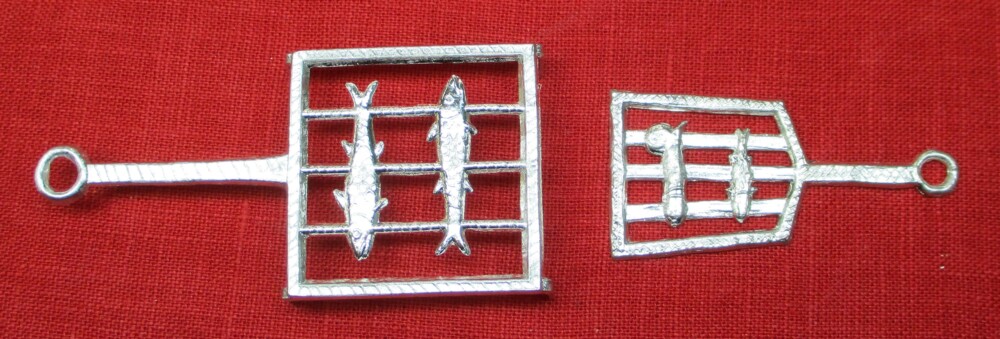
And finally, a pair of gridirons, the less seemly of which takes us back to the penis/fish thing we saw in that 16th-century print with the cat. The other is part of a child’s toy kitchen.
Check out our continuously updated page of Parodies and Perversions, where you can find all the twin and triplet sets we have produced, and get a little discount on a set if you want to keep your granny happy while amazing your friends.

